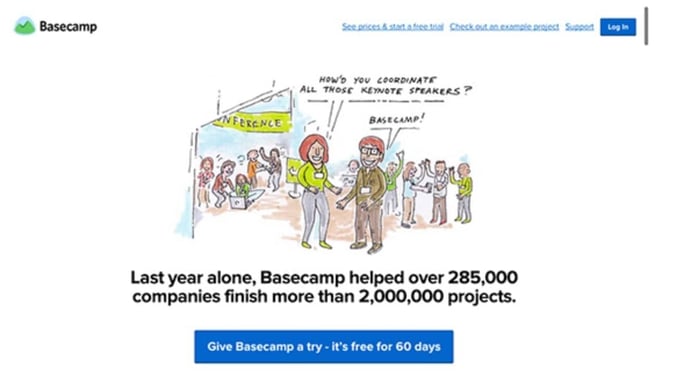Landing pages are some of the most important pages on your website. Each is designed to serve a purpose - most likely, to convert a prospect into a lead.
A good landing page will be simple, yet powerful. But a poor landing page could lose a contact at the crucial point of conversion.
Marketers use a variety of techniques to improve conversion rates - like imagery, contrasting colours, and graphics - but as we know, words are the real currency of the internet.
Writing well is one thing, but writing an effective landing page is a dedicated skill.
Contribute first, sell second
As Tweeted by the wise professors of HubSpot- "Contribute first, sell second".
In inbound marketing, we preach this time and time again, because attempting to sell without offering something of value first could risk interrupting a prospect before they're ready to buy.
In terms of landing pages, it's better to explain what the user will achieve, the experience, the feeling, and the value your product or service has to offer.
What do they have to gain from purchasing or downloading the product or service you're trying to sell?
Only then will it feel natural to them to go in for that all important conversion.
Get to the point
Try not to bloat your prose with unnecessary words, such as 'indeed', 'perhaps', or 'quite'. These suggest uncertainty, and create a lack of cadence which could lose the reader at this vital opportunity.
B2B customers and prospects have limited time. Tell them what they need to know quickly and succinctly. To do this, you'll need to remove all extraneous content, buttons, navigation and CTAs. Landing pages must be clean, clear and transparent. Tell the user what they need to know and where they need to go next.
What? Why? How?
If you're not sure where to start, just think about answering these three questions. What is your product or solution? Why does the user need it? How will you help them?
Sage have demonstrated this brilliantly. It's clean, it's clear, and every word has earned its place. Plus it answers all of the users' questions:
-1.jpg?width=594&name=Screenshot%202019-02-12%20at%2016.53.0%20(1)-1.jpg)
What? 'Get ready for Making Tax Digital'
Why? 'Making Tax Digital changes how businesses submit VAT returns from April 2019.'
How? With Sage
CTA: Learn more
Simple. Yet so effective.
Use social proof
People conform to the actions of others under the assumption that those actions are positive. For example, 'Join 9,000 tech companies that have increased their conversions’.
Or like this, from Basecamp:

When people feel they are missing out or competitors are benefitting from what you have to offer, they're more inclined to click that CTA.
For that reason, social proof is extremely effective at encouraging conversions.
I must also point out the transparency of the language used here:
'Give Basecamp a try - it's free for 60 days'.
Why wouldn't you?
Speak to ‘you’
People are more likely to engage if you speak directly to them. That means not being afraid of writing in the second person.
Take the sentence:
‘To become more productive and efficient at work, the following habits should be implemented into the working day.’
Let’s change one thing:
'If you want to become more productive and efficient at work, you’ll need to implement the following habits into your working day.’
Notice the difference? Which is more engaging? And which makes you want to click?
Use ‘you’ and ‘your’ to keep your reader involved.
Stay active
No, not like that. You can leave your running shoes alone for now.
I’m talking about the active voice, which ultimately, always wins.
CrazyEgg stand by the assertion that simply switching to the active voice can pretty much double the power of your copy.
Look at these examples:
Passive: 'Our latest software was released on Monday'
Active: 'We released our latest software on Monday'
Feel the difference?
The active voice feels more present, more urgent, and more engaging. And by opting for the active voice over passive, you are less likely to waste words; every word serves a purpose.
This is particularly relevant when speaking of landing pages, because, as we've already discussed, unnecessary words just aren't welcome.
So apply this one simple hack if you want to recharge your landing pages or conversion copy in general.
You might have limited space, limited time and a limited word count when developing your landing pages, but it pays to make every word count. Think about telling the reader exactly what you intend to deliver. But more importantly, ensure the content behind the button is true to its promise. A great reputation and online authority are forces to be reckoned with as online competition grows.
Your landing pages are the gateways to your compelling offers, so give them the attention they deserve.


